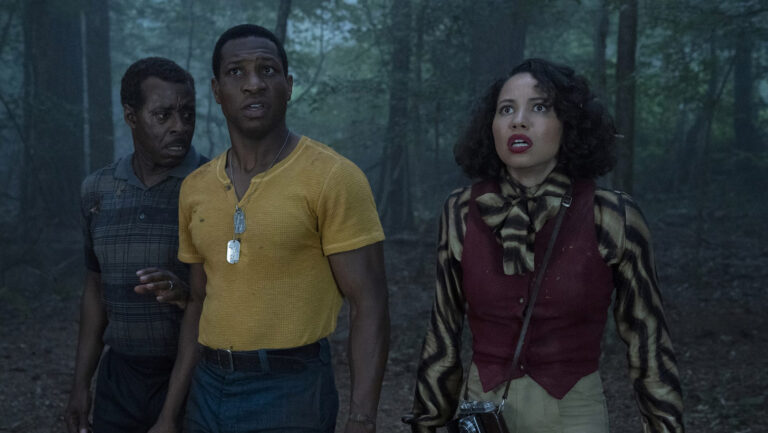Neighbors often saw Darger scavenging through garbage cans. They also heard him carrying on elaborate conversations with himself in a range of weird voices. To the few people who knew him, he was just another sad soul living out his life trapped in lonely daydreams. Yet there was one stark difference between Darger and most other Eleanor Rigbys: During the long hours he spent in his apartment alone, he recorded his dream world in painstaking, ingenious detail.
At the age of 81, his health deteriorating, Darger was placed in a Catholic poorhouse to die. When his landlords, Nathan and Kiyoko Lerner, were cleaning out his apartment, they discovered hundreds of mixed media paintings, many of them double-sided and composed on wide scrolls over 10 feet long. The paintings mostly depicted little girls—many of them naked with penises for genitalia (!)—fighting soldiers in Technicolor dreamscapes inhabited by a multitude of otherworldly creatures.
The Lerners dug deeper into Darger's clutter and discovered tens of thousands of manuscript pages. Among these pages they found a 12-volume, 15,000-page novel titled The Story of the Vivian Girls, in What is Known as the Realms of the Unreal, of the Glandeco-Angelinnian War Storm, as caused by the Child Slave Rebellion.
Thankfully, Darger's landlords recognized that they had stumbled on a bizarre treasure. In Darger's strange narrative vision, the Christian country of Abbiennia wages war against Glandelinia, an evil domain that enslaves children. The heroines of Darger's novel are Abbiennian princesses called the Vivian sisters, seven beautiful girls who lead the Christian struggle against the slave lords.
He began work on his peculiar project in 1909. He didn't complete it until shortly before his death in 1973.
After studying this body of work for over a year, filmmaker Jessica Yu took on the difficult task of documenting Darger's life and work. The resulting film, In the Realms of the Unreal, has received wide acclaim, and for good reason. Yu has used several innovations that work wonders in translating Darger's beautiful but disturbing imagination to the screen.
Unsatisfied with his ability to draw human figures, Darger often traced or used cutouts from magazines, newspapers and comic books. Yet he had a striking talent for composition, and his use of vivid color schemes is dazzling in its originality. His work often combines innocent, idyllic elements with graphic, stormy violence.
One of the main themes of Darger's epic seems to be that the adult world consistently betrays and fails children. Damaged and abused during his own miserable childhood, this reclusive artist clearly viewed himself as a defender of children. With this in mind, Yu has opted to use the voice of a young girl as the main narrator of her film. It's a jarring but effective touch.
Less jarring, and even more effective, is Yu's amazing use of animation. She sets Darger's paintings in motion, bringing his creations to life and setting them loose in the real world. Using these experiments along with more traditional documentary techniques, Yu examines numerous parallels between Darger's art and what little is known about his tragic life.
In the end, Darger remains a compelling mystery. Even those who knew him didn't really know him. In many cases, the people Yu interviews can't even agree on the most basic details of his existence.
The mystery of Darger's life, though, pales beside the mystery of his art. Developing his talent in isolation from the traditions and commercialism of the mainstream art world, Darger created a totally original and almost inconceivably ambitious piece of graphic and literary art. At the end of her film, Yu points out that Darger's work has since inspired everything from theater to fashion to art to literature—an amazing feat considering that the entire massive epic will probably never be fully absorbed and understood by anyone but poor Henry Darger himself.



